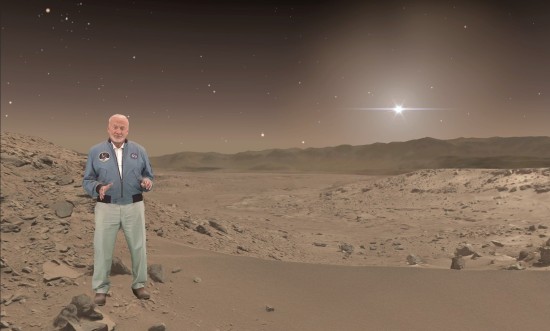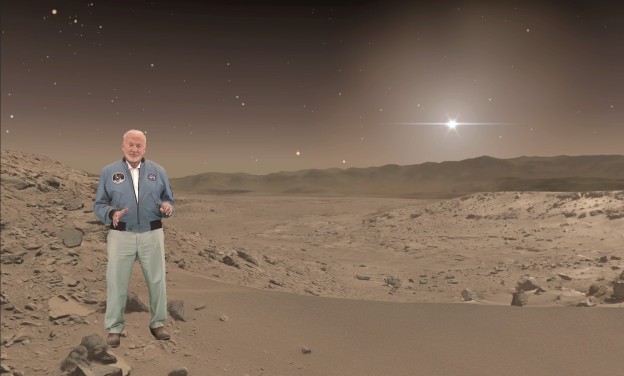
Ever wondered what it would be like to climb the largest mountain in the solar system? Okay, so that may not be possible on HoloLens just yet, but you may just be able to see it in the distance as you are walking on Virtual Mars following the path that the Rover took on.
A group of researchers at NASA’s Jet Propulsion Lab(JPL), Pasadena, California have been working on methods to bring this imagining into a reality, albeit a virtual one anyway.
The result of their work involves NASA and Microsoft teaming up to offer the public guided tours of an area on Mars with astronaut Buzz Aldrin as their host for the journey. Coming out this summer is ‘Destination: Mars’, an interactive exhibit using the Microsoft HoloLens AR headset. Interesting no note here that they are touting ‘Mixed reality’ as a buzzword for this over ‘Augmented reality’
‘Augmented Reality’ also to be known as ‘Mixed reality’ means that virtual elements are merged with the user’s actual environment, creating a world in which real and virtual objects can interact.
The exhibit will be opening at NASA’s Kennedy Space Center Visitor Complex in Florida this summer. Users will “visit” sites on Mars, reconstructed using real imagery from NASA’s Curiosity Mars Rover, which has been exploring the Red Planet since August 2012. Buzz Aldrin, an Apollo 11 astronaut who walked on the moon in 1969, will serve as “holographic tour guide” on the journey. Curiosity Mars rover driver Erisa Hines of JPL will also appear holographically, leading participants to places on Mars where scientists have made exciting discoveries and explaining what we have learned about the planet.
JPL is also developing mixed reality applications in support of astronauts on the International Space Station and engineers responsible for the design and assembly of spacecraft. NASA astronaut Scott Kelly, who recently returned from his historic “Year in Space” activities, used one of these applications to make the first Skype call from space to mission control in February 2016.
“By connecting astronauts to experts on the ground, mixed reality could be transformational for scientific and engineering efforts in space,” Norris said.
“As we prepare to send humans to Mars in the 2030s, the public will now be able to preview the experience the astronauts will have as they walk and study the Martian surface,” said Dave Lavery, program executive for Solar System Exploration at NASA Headquarters in Washington.
